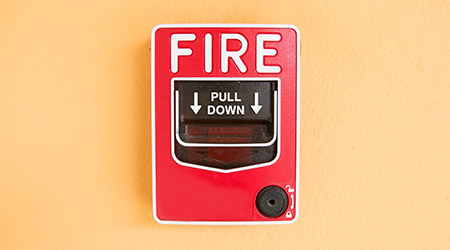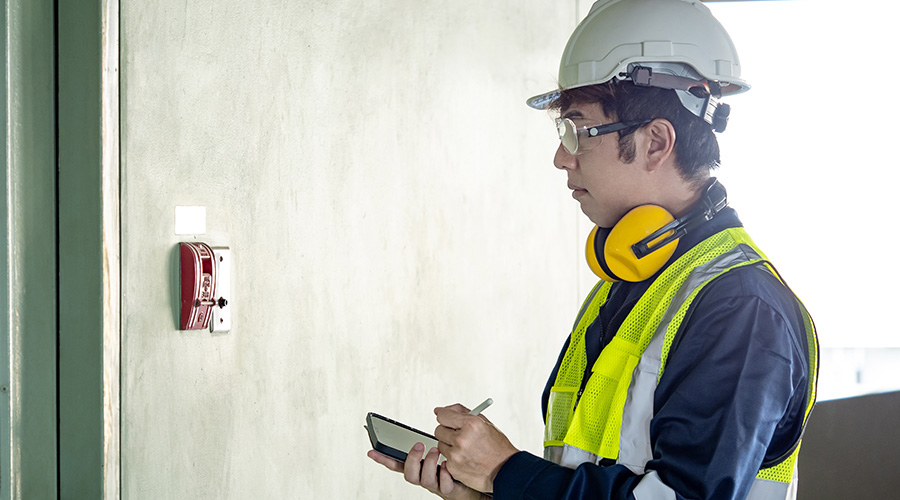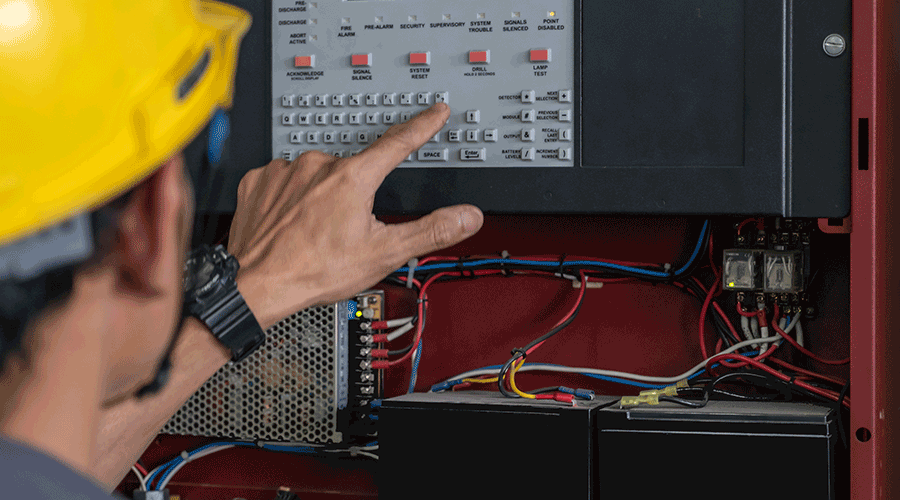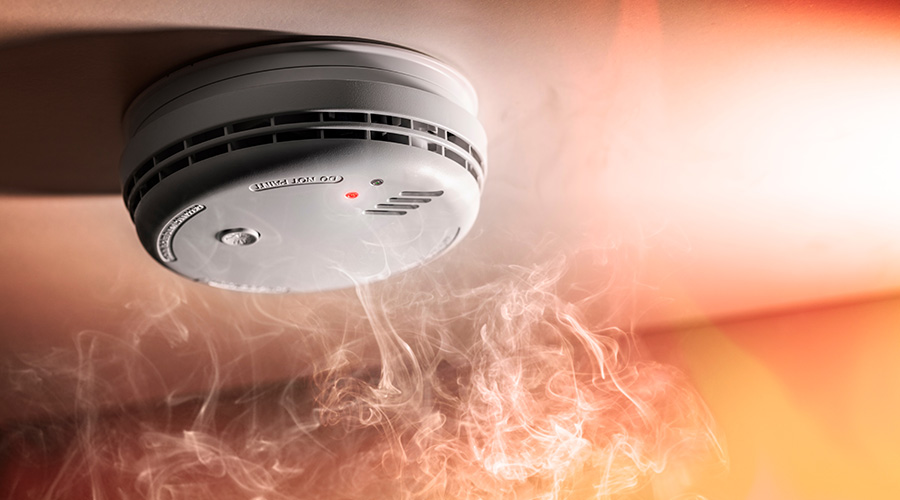How to Choose the Right Process to Upgrade Fire and Life Safety Systems
There are so many considerations — code, cost, quality - when replacing a fire and life safety system, making sure you're taking the right approach should be paramount. Here's how.
Nationwide, there are tens of thousands of buildings with aging fire alarm and other fire protection systems, which were installed in years past as the most modern of devices at the time. While meeting the need at the time, when looked at through today’s technological lens, they appear aged, inadequate, ineffective, or even non-functional.
Many conditions may create the need for a facility manager to upgrade, retrofit, or even completely replace aging life safety equipment. As age increases, troubles increase and total-system failures are common. With system components no longer available, systems that are out-of-service-life must be replaced as listed repair options are not available. Additionally, other issues may cause a facility manager to review the need to replace their systems, including:
- Change in occupancy or use
- New safety requirements, like emergency communication
- Interface with new security or mechanical equipment
- Legal mandates
- Risk reduction
- Significant building remodel or additions
Occasionally, the need to significantly upgrade a system may come as a surprise to a facility manager. For example, in Nebraska, when a new fire alarm control unit is installed or added to an existing fire alarm system, the entire fire alarm system is required to meet the requirements of a new system.
Thus, when a fire alarm control unit fails due to age or other issues, the entire facility may need to be upgraded to the current standard, resulting in significantly more cost and usually the need for a significant design effort. By the way, rules like this in Nebraska, the City of Dallas (i.e., Dallas Fire Code Ordinance No. 30135), and other jurisdictions are often ignored by building owners and even system service providers due to lack of knowledge of such requirements and lack of enforcement resources on the part of state or municipal agencies.
Upon recognizing the need, facility managers are faced with serious decisions on how to go about upgrading or replacing a system, usually while maintaining a reasonable level of protection. One would think that this is where a licensed fire protection engineer saves the day. However, with increasing regularity, fire protection engineers are left out of the process as facility manager proceed with more “practical” solutions to designing a new system.
With economic pressure, and often limited time to complete such a project, facility managers must weigh their available options on which approach to take when it becomes necessary to design an upgrade or replacement project. Let’s review some of these options, as each has pros and cons that must be considered.
The Vendor Approach
Often a facility manager will develop a strong working relationship with their existing system manufacturer, vendor, or local service provider. Over a period of time, that vendor may note increasing troubles or deficiencies with the existing system and work with the facility manager to provide a migration solution to update the technology of the existing system.
This type of approach can bring significant benefits to the building owner and facility manager. Many times the existing equipment can be upgraded by the same existing-system manufacturer, resulting in no UL Listing compatibility issues, keeping some existing devices in their same location, and even reusing existing system wiring in some cases. Usually such an upgrade or migration can be accomplished relatively quickly, with a simple plan review and commissioning process. Also, a local system supplier usually has an excellent handle on local codes and authority having jurisdiction (AHJ) requirements, and the facility manager has the confidence in hiring a local vendor that they are comfortable working with.
This approach, however, can have substantial downsides. Most significantly, it leaves the services of a fire protection engineer out of the equation, resulting in the possibility of missing the “whole picture” with the upgrade. Because the upgrade is limited to the fire alarm system (or what that individual vendor can provide), other interfaced systems are left out, including fire sprinkler systems, access control systems, door egress, fire/smoke barriers, and all varieties of mechanical system upgrades and changes. This may force a facility manager to systematically work through years of system upgrades of various systems with multiple vendors, and in the long run result in a considerable increase in costs.
Additionally, a local system provider may create a questionable design, perhaps with a code-minimum approach that does not adequately address the true needs of the facility. Local providers may not have the design expertise required for the project (such as a NICET-certified design staff) and they may have to sub-contract the installation of the design to others with limited fire alarm installation knowledge and credentials. Such an upgrade strategy would lock an owner into a specific fire alarm manufacturer, which could be a good or bad thing based on the system features available and the actual UL Listings of the new fire alarm control unit with the potentially existing system devices. Few system owners or facility managers would verify the UL compatibility of all of the devices provided (both new and existing). In the end, a vendor approach may meet the need, but miss the purpose of the upgrade.
The Code Consultant Approach
There are a number of excellent and well-qualified code consultant firms currently in operation. These firms, many with national and even international reach, provide detailed code consultant services ranging from engineering and fire investigation to construction management and other similar services. They usually provide these services through a network of offices located in different regions and often have fire protection engineers, professional engineers, and other licensed and certified individuals on-staff.
Code consultant firms provide niche-specific benefits to facility managers, who may have very limited expertise in their own life safety systems. Providing a usually high-quality design, often through the use of fire protection engineers, these firms can offer a holistic approach to the upgrade needed, including a needs analysis, an un-biased existing system review, specification writing, vendor bid review and award, construction management, and commissioning oversight and assistance. Systems are usually designed to be vendor neutral, focusing on true specified facility needs and measuring all vendors against those needs.
Due to the national reach of these code consultant firms, a local presence may not be available, making for a difficult selection process and an unfortunate increase of cost on the part of the owner. There may also be a serious lack of local code and AHJ knowledge and their services may be limited to the upgrade or replacement project, with no long-term service offering for the new system. Using these services, upgrades are usually limited to the life safety systems in the building, with upgrades to mechanical or architectural features being forced to be handled separately or at a later time. A specification writing and open bid process may significantly increase the time required for the upgrade, and based on the vendor chosen may require the complete replacement of every feature of the existing system.
The Traditional A&E Approach
Hiring an architect or construction management firm remains the traditional approach for most building owners and some facility managers. Working through a team of engineers, the architect manages the construction process from owner consultation and conceptual design to construction and commissioning. This system has delivered acceptable results for years, whether for a completely new building or for a significant remodel and/or addition to an existing building.
There is safety in this approach for a building owner, as the construction management firm can do what it does best and so can the building owner. This approach provides a complete building approach, reviewing each system and sub-system with a needs-analysis and life cycle approach that hopefully ensures no system or feature is left behind. With a strong specification driven approach, the process can be completed successfully with a strong General Contractor-led installation team. Indeed, this may be the only logical option when adding on to or significantly altering the building structure.
Utilizing a long construction schedule, a significantly more complex commissioning process is involved and must be accomplished by a larger team than the other options. In many ways, this approach would be overkill for those situations where only a life safety system upgrade (fire alarm or fire sprinkler, or a combination of both) is necessary.
Interestingly enough, this traditional approach sometimes also leaves out the services of a licensed fire protection engineer. Based on the preferences of the Architect or construction management firm, occasionally engineering firms are selected that do not use the services of a fire protection engineer. Although talented and experienced in their field of expertise, professional engineers may lack training or expertise in fire alarm (or sprinkler) system design and layout. In many such cases, a hybrid option may be used, where the professional engineer, architect, or even the general contractor may rely on a vendor or consultant to get the needed results.
Cost and Quality
Cost is always a significant consideration by a facility manager, and there is much debate about which of the above options is more cost effective. The vendor approach should theoretically result in the lowest cost, as no other individuals or companies are involved. However, without a competitive bid process or cost check, a facility manager would have no idea if they were getting a cost competitive number. Both the code consultant and traditional approach usually involve a competitive bid process, thereby allowing a building owner to perform a quality cost analysis, as well as a scope of work review. When upgrades are limited to the life safety systems in the building, the code consultant approach can be an excellent way to obtain a comprehensive life safety review at a cost-efficient price. The traditional approach is normally the highest cost option of the ones we have discussed, mostly due to additional scope of work that can be included in the project like building additions, HVAC upgrades, and the like. In today’s economic climate there should be some significant cost advantages with an open bid/open specification process, as well as some possible advantages with construction insurance risk via the Architect/General Contractor team.
Closely related to cost is quality, which is far more often overlooked. The quality of the design effort will determine the long-term success of the project. This means that a facility manager must closely analyze the design qualifications of the team they select. As noted above, several of these options may leave out the services of a licensed professional engineer. The Society of Fire Protection Engineers (SFPE) along with the National Society of Professional Engineers (NSPE), the National Institute for Certification of Engineering Technologies (NICET), and a number of other endorsing organizations have developed a unified position statement regarding the reasonable and prudent roles and responsibilities of Licensed Professional Engineers and Certified Engineering Technicians when designing fire protection systems for installation in the United States.
The Worst Approach
The worst approach a facility manager can take is, of course, to do nothing at all. As existing systems age and eventually fail over the years, an owner faces increasing risk and liability, and may even be missing out on significant advantages available via today’s technology. Running the risk of a system failure without an upgrade plan in place will always increase costs. In these cases, solutions must be found very quickly and are often only stop-gap measures until a more permanent solution can be found, often using more than one of the three options noted in this article.
Facility managers do well to consider:
- What are my real needs now and over the next couple of years when it comes to the life safety of my building occupants?
- What real system problems do I currently face and what design options described herein can help me address my real needs?
- What changes have occurred with my building, or might occur in the near future, that affects the above design option I need to consider?
- If I lead with a fire alarm upgrade, what other systems should follow, and how does that affect what kind of design I should select now?
Facility managers can still be appreciative of the years of service that existing systems have provided. However, they must understand that these have served their purpose and they must now plan for the future and look for what “digital” solutions are available. Select carefully because the effort behind the design will determine the long-term success of your upgrade, retrofit, or complete system replacement.
Larry D. Rietz, SET, is a Vice President and the Global Service Line Leader – Fire Detection and Alarm for Jensen Hughes.
Related Topics:












